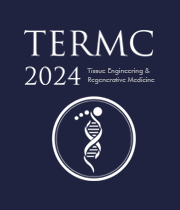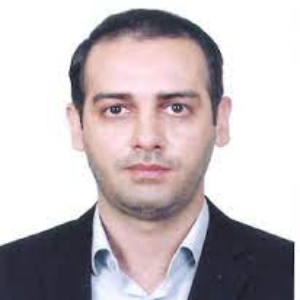Title : Restoration of Craniomaxillofacial Bone Deficiencies by Patient-Specific 3D Bioprinted Bone Scaffolds
Abstract:
Guided bone regeneration (GBR) is a reconstructive procedure for craniomaxillofacial bone defects. Common GBR methods using barrier membranes combined with bone graft could be limited due to the complicated structure of craniomaxillofacial bone, large area bone resorption and the uniqueness of individual defects. Three dimensional (3D) bioprinting technology facilitates the fabrication of complex patient-specific meshes and scaffolds. To date, the application of 3D bioprinting to reconstruct the craniomaxillofacial bone defects is very limited. In the present study, 3D bioprinted patient-specific scaffolds were prepared and applied for three patients.
The present study consists of 5 stages: developing an appropriate bioink, determining the physicochemical characteristics of scaffolds, performing in vivo animal experiments, designing and fabrication of patient-specific scaffolds and in-human implantation of scaffolds. The developed bioink was a composite of PCL/β-TCP. The presence of β-TCP as a bioactive element in the composite enhanced the cell behavior and scaffold integration with surrounded bone to prevent any localized necrosis or implant failure. The scaffold pore size set to 400 µm which is desirable for bone tissue regeneration. By means of SEM-EDS technique (Scanning Electron Microscopy with Energy Dispersive Spectroscopy), Ca/P molar ratio of deposited layer was measured 1.71 which is similar to human bones (1.63). Subsequently MTT assay confirmed the biocompatibility of scaffolds. In vivo evaluation of scaffolds was performed on the calvarial bone of eight-week-old male Sprague-Dawley rats (n=4, Pasture institute). Histological analysis showed that after one-month, collagen fibers were deposited and after three months, the created defect filled with new bone tissue. Large populations of osteoblasts and osteocytes were present at the defect site and the shape of repaired tissue was similar to the natural bone. Then, three subjects with different periodontal defects were selected for scaffold implantation. The first one was a 69 years old female with intense bone resorption in the bone surrounding the missing upper left molar and pre-molar teeth. The second subject was a 62 years old female with severely bone lose around two implants in her left posterior maxilla four years after insertion. And the third one was a 73 years old female with an edentulous maxilla. In all cases, bone augmentation was proposed due to the patients’ inadequate bone volume for stable dental implants. So, personalized scaffolds were designed, 3D bioprinted and implanted in patients.
In all cases, the implantation of developed PCL/β-TCP composite scaffolds as an artificial bone substitute revealed promising results after continues follow ups. In conclusion, we have successfully 3D bioprinted PCL/β-TCP scaffolds and sheets, evaluated their bioactivity and biocompatibility, and investigated their performance during in-vivo experiments. According to the results, 3D bioprinting technique is thought to be very helpful for patients with craniomaxillofacial bone disease.


